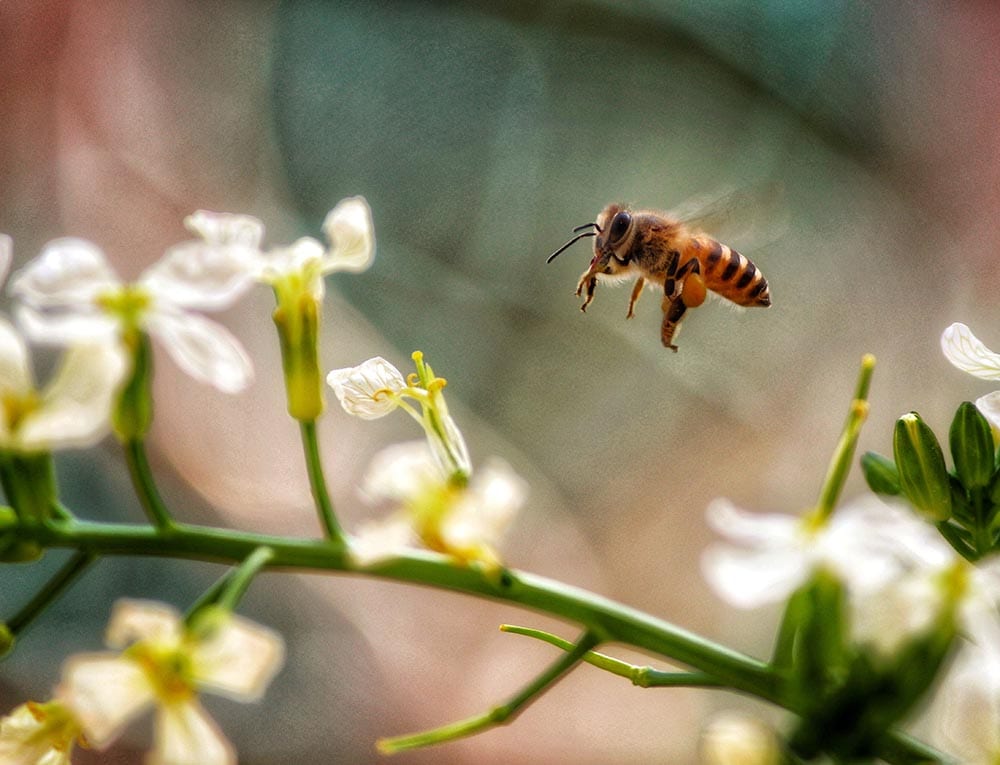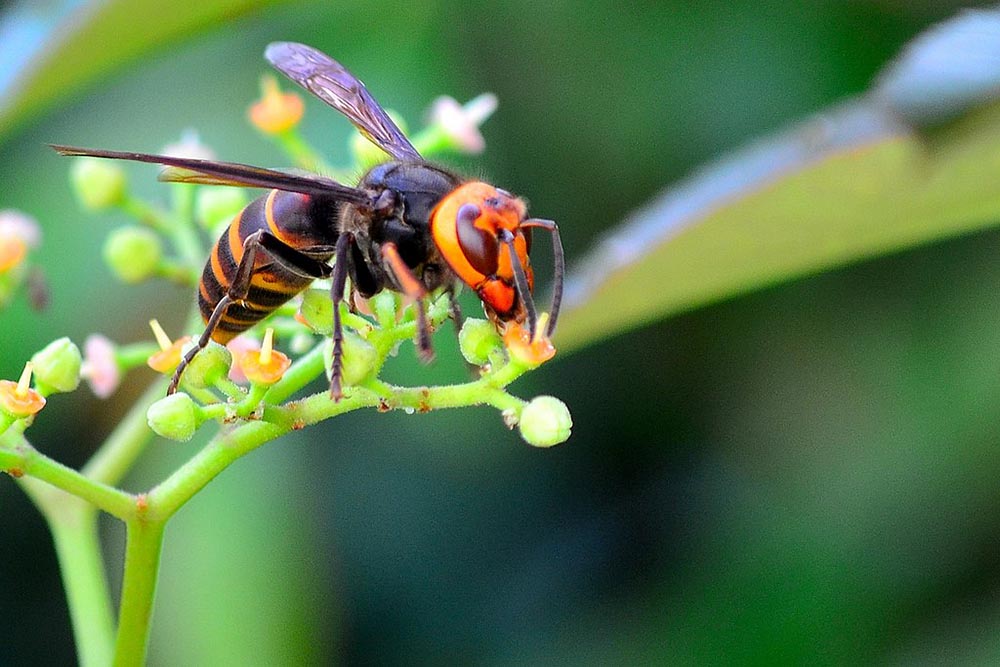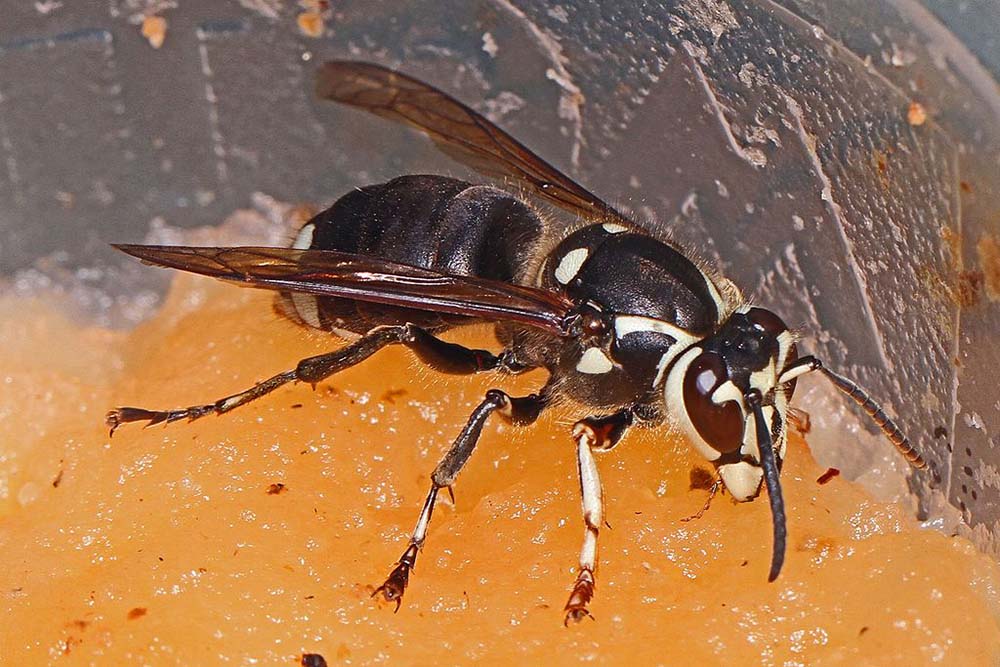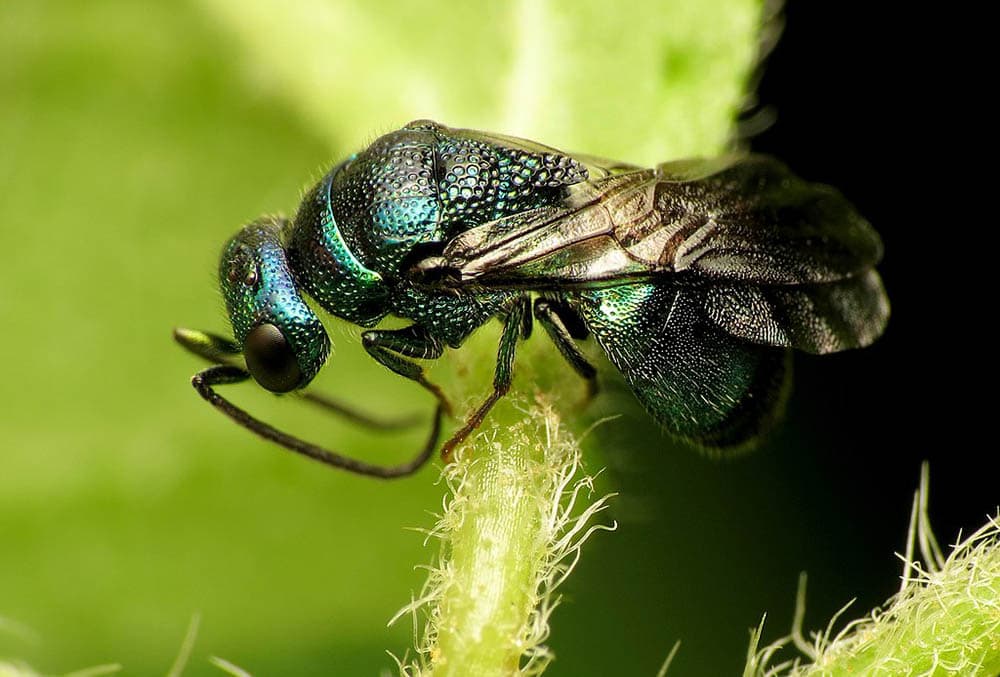7 Types of Wasps in Your Backyard (With Pictures)
-
Codee Chessher
- Last updated:

Wasps are a pernicious outdoor pest, and their ability to sting multiple times can be painful. It is vital to identify the types of wasps you have in your yard because some are more dangerous than others. Identifying the threat level the wasps pose should be the first step in combating any wasp infestation. Let’s check out the most common types of wasps you might have in your yard.
The 7 Types of Wasps in Your Backyard
1. Yellowjackets

Perhaps the most infamous of all wasps, yellowjackets have a distinctive black-and-yellow pattern that makes them impossible to misidentify. Yellowjackets are drawn to picnics and barbecues everywhere by the delicious aroma of sugary drinks and grilled meat, where they plague partygoers. These wasps can travel up to 1,000 feet away from their nests in search of food, which makes them especially annoying to get rid of.
2. Mud Daubers

Although mistaken for black, mud dauber wasps are a dark metallic blue-gray, with a notably slender waist. Mud daubers are known for their mud nests they place under sheltered areas, which are surprisingly hard to get rid of. Mud daubers aren’t aggressive and serve as a predators for spiders. This means you might want to consider letting them live in your yard as long as they aren’t being unusually aggressive.
3. Paper Wasps

Sometimes mistaken for yellowjackets, paper wasps can be identified by their paper-like umbrella-shaped nests with a single comb. Unlike other wasp nests, paper wasp nests are completely open and exposed. You’ll usually see their nests on twigs and tree branches, and they don’t damage property. However, paper wasps can sting multiple times like other wasps, and they’ll sting anytime they feel their territory is threatened.
4. European Hornets

Most people probably don’t know that hornets are actually wasps! The most common type of hornet in the US is the European hornet, carried over from Europe in the 19th century. These have a large brown body and head, but their colors can get as light as yellow. European hornets live in papery nests found under porches, hollow trees, and other attractive areas. Just one nest can support up to 400 hornets, so they’re very annoying pests.
5. Bald-Faced Hornets

These very aggressive hornets will sting repeatedly if they feel their nest is in danger, making them as threatening as yellowjackets. With a unique, stout black-and-white body, you can find their nests around the eaves of buildings, tree branches, or even woody bushes. They’re very large and easy to spot, and they’re notorious for their painful stings. Take action immediately if you see these guys hanging around your yard.
6. Potter Wasps

These are solitary and beneficial wasps known for hunting caterpillars and stealing the homes of other wasps. They don’t build homes at all—they’ll lay claim to an abandoned wasp nest and bring caterpillars to it, where they’re paralyzed to serve as food for the wasp’s larvae. The wasp that laid the eggs will typically move on after this, and the larvae will be left behind to hatch and feast on the caterpillars.
7. Cuckoo Wasps

Cuckoo wasps are the easiest to spot by far, with a signature metallic green body with black legs and eyes. They’re usually quite small and not a threat to humans. The name comes from their cuckoo-bird-like habits, where they lay their eggs in the nests of other wasps and bees. Unlike other wasp species, the cuckoo wasp will flee or curl up when they’re threatened.
Final Thoughts
Wasps are an irritating and invasive pest and identifying them can be difficult in some cases. Yellowjackets are easily the most dangerous because of how far they roam, while the striking cuckoo wasp is a huge wuss. Before getting rid of them, first find out if they’re a stinging wasp and not a potentially beneficial addition to your yard.
Featured Image Credit: Shubham Mishra, Pexels
Contents

